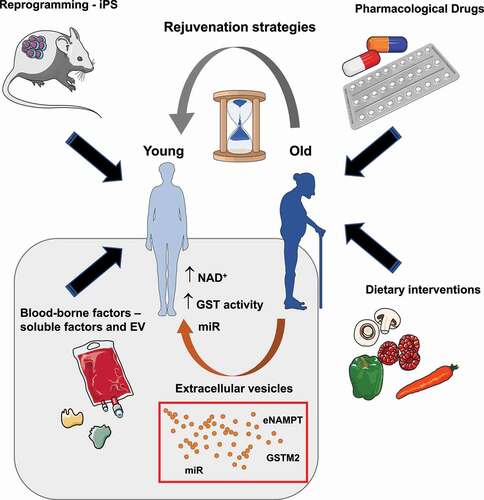Figures & data
Figure 1. Current rejuvenation strategies to promote healthy aging. There are a few strategies that have been proven to improve aging or age-related diseases. Some include the use of pharmacological drugs targeting nutrient sensitive pathways implicated in regulating aging, Other strategies include dietary restrictions, such as low caloric intake or reduced carbohydrate/protein consumption, that affect the nutrient-sensitive pathways. A bit more challenging is the generation and partial induction of induced pluripotent stem cells (iPS) by the expression of the four Yamanaka factors: Oct4, Sox2, Klf4 and c-Myc (OSKM). Finally, the use of cell-free blood-borne factors and in particular extracellular vesicles (EV) is an emerging strategy that holds promise for the clinic once some technical barriers are achieved. In fact, EV enriched in nicotinamide phosphoribosyltransferase (NAMPT), glutathione-S-transferase mu2 (GSTM2) or a specific subset of microRNAs (miR) have been shown to stimulate rejuvenation by promoting the biosynthesis of nicotinamide adenine dinucleotide (NAD+) or activating the GST pathway. It is important to note that it is likely all or at least some pathways are interconnected contributing to organismal rejuvenation.

